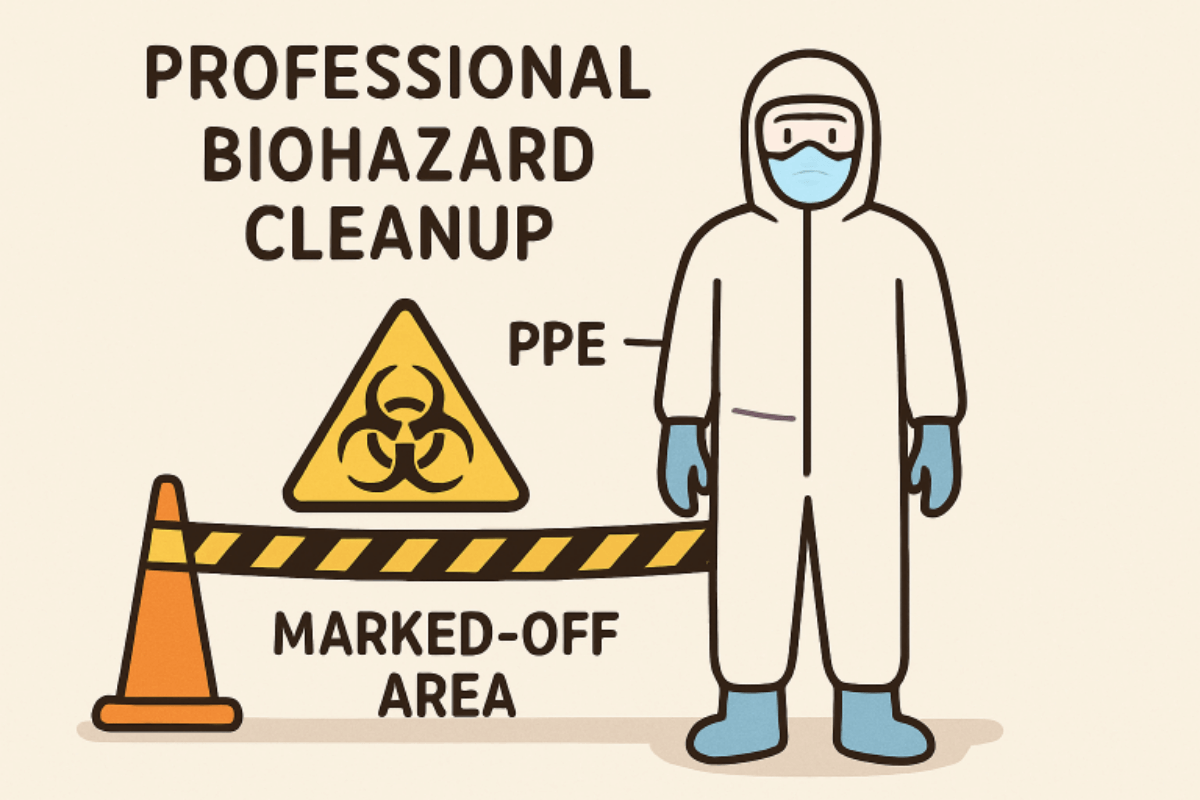Biohazard incidents often occur without warning—whether due to accidents, unattended deaths, or hazardous material exposure. In these moments, understanding when to seek professional intervention can make all the difference in protecting health and preventing long-term property damage. Acting quickly is vital; biohazardous materials can threaten not just current occupants but anyone who comes into contact with the area in the future. For situations such as trauma scenes or crime sites, pursuing death cleanup services ensures safety, regulatory compliance, and peace of mind.
It’s not just obvious disasters like chemical spills or major floods that require certified remediation. Even seemingly contained incidents—like minor blood spills or mold patches—can harbor threats invisible to the naked eye. Attempting to remedy these events without expert help can fail to eliminate risks, expose you to infectious agents, and even create legal liabilities.
For residents and property owners, understanding the warning signs is the first step in responsible management. If you suspect a potential biohazard, recognizing when to turn to professionals is key. The risks extend beyond unpleasant odors—exposure to biological agents, toxins, and pathogens can lead to serious illness.
Presence of Blood and Bodily Fluids
Any scenario involving blood, tissues, or bodily fluids from injuries and accidents to violent crimes demands more than household cleaning. Bodily fluids can transmit dangerous pathogens such as HIV, hepatitis B, and hepatitis C. Proper remediation requires specialized techniques and chemicals that eliminate contamination down to the microscopic level, protecting building occupants from chronic or latent infections. This is why many property owners and managers in need of biohazard remediation turn to Seattle area biohazard cleanup professionals, who are trained to handle these situations safely and thoroughly.
These experts also ensure that affected areas are deodorized and restored to safe, habitable conditions. Quick response and professional handling reduce the risk of secondary contamination and long-term health issues.
Unattended Deaths
When a person passes away and their remains are undiscovered for a period of time, decomposition rapidly sets in. Decomposing bodies release hazardous fluids and airborne toxins that permeate floors, walls, and furnishings. The resulting health risks are compounded by the emotional impact on those involved, making professional intervention essential for thorough sanitation and compassionate handling of the situation. For more information on the risks and considerations when a body is left undiscovered, see this BBC article.
Proper cleanup not only protects the physical health of anyone entering the space but also helps prevent long-term contamination of the property. Engaging trained professionals ensures that the process is handled safely, efficiently, and with sensitivity to those affected.
Hoarding Situations
Hoarding is more than a matter of clutter. Severe cases can result in the buildup of hazardous biological materials, including spoiled food, animal waste, decomposing organisms, and large mold colonies. These unsanitary conditions attract pests and contribute to compromised indoor air quality, exacerbating respiratory and other health conditions. Biohazard professionals are required to systematically clean, clear, and restore these environments for safe habitation.
Sewage Backups
Sewage overflows or backups introduce a cocktail of bacteria, viruses, and parasites into your property. Exposure to raw sewage can lead to severe illnesses, ranging from gastrointestinal disease to parasitic infections. Cleanup is not only mandated by most municipalities. But is the only way to restore sanitary living or working conditions safely and reliably.
Mold Infestations
Unchecked mold growth—often triggered by hidden water leaks or post-flooding—presents invisible respiratory hazards. Spores released into the air can trigger allergic reactions, asthma attacks, and chronic illnesses. Professional remediation is needed to not only remove toxic mold. But also address structural moisture issues that allow colonies to thrive.
Chemical and Drug Lab Residues
Homes and business properties that once housed illegal drug labs, such as methamphetamine operations. Are often contaminated with toxic chemical residues. These lingering chemicals pose grave health risks to future occupants and are extremely difficult to clean without specialized equipment and training. Regulations often require certified teams to bring properties back into compliance with health and housing codes.
Animal Waste and Carcasses
Animal infestations, accumulations of droppings, or the discovery of animal remains introduce a range of harmful pathogens, such as hantavirus and Salmonella. These hazards aren’t limited to rural or neglected properties—urban settings are just as prone to infestation. Removal and decontamination by professionals eliminates potential health threats and restores sanitary conditions.
Infectious Disease Contamination
Pandemics and outbreaks such as COVID-19 or MRSA highlight the importance of thorough decontamination following exposure. Ordinary cleaning products are insufficient for eliminating many high-risk pathogens. Specialized teams use evidence-based disinfectants and protocols confirmed by health agencies to break chains of infection and help prevent further spread. According to the Mayo Clinic, infectious diseases are caused by bacteria, viruses, fungi, or parasites. Also proper hygiene and sanitation are critical in reducing transmission and protecting public health.
Timely recognition and response to these biohazard warning signs can prevent ongoing health risks and protect property integrity. Whether faced with visible contamination or a lurking biological threat, seeking professional biohazard cleanup is the most effective way to ensure safety, compliance, and long-term peace of mind.

